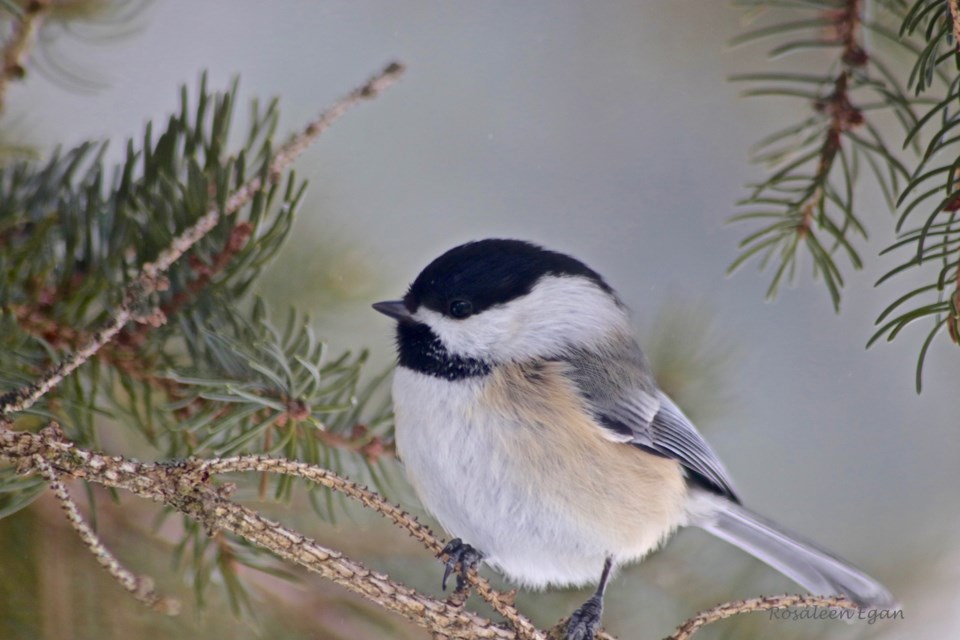This weekend includes Valentines Day, Family Day and the Great Backyard Bird Count. The count is a joint program of the Cornell Lab of Ornithology and Audubon with Canadian partner Birds Canada.
In thinking of this three-event weekend, I thought the bird that may be most fitting to highlight is the Black-capped Chickadee. It is a year round resident making it practically part of the family. It is found in most backyards and it has a very high cute factor with an endearing personality making it hard not to love.
Chickadees are sometimes dismissed as so common as to be uninteresting. I have seen people on birding sites apologise for posting chickadee photos because they are not rare birds.
Part of their charm is their very familiarity. They tend to be constants and are very curious and friendly. I find they are not skittish at all about my presence, whereas bigger, more colourful birds such as blue jays and cardinals fly away at even small movements.
Chickadees hang out, and will eat sunflower seeds out of my hand at times. They certainly will approach a freshly filled feeder while I’m still setting it up. And what do they do with these seeds you ask. Well, unlike many other “backyard” birds that like sit to eat at a feeder, the chickadee whirrs in, snags a seed and flies off to eat it in solitary peace.
They hold the seed on a limb or some other hard surface to break it open with its beak and pull out the kernel inside. They may also hide seeds to eat later. Each food item gets its own place, and chickadees can remember thousands of such places to snack on through the winter.
According to birdsoftheworld.org, most of what’s called caching is done in the fall and common hiding spots include “include bark, dead leaves, lichens, clusters of conifer needles, knotholes, and even dirt or snow”.
In the winter half a Black-Capped Chickadee’s diet is insects and spiders, the other half is made of seeds and berries. During breeding season, they up the meat intake to 80-90 per cent. Birch, willow and alder trees can be added to a backyard to attract chickadees. Suet and sunflowers seeds are favourites.
Allaboutbirds.com says that in the fall chickadees “allow brain neurons containing old information to die, replacing them with new neurons so they can adapt to changes in their social flocks and environment.” Hmm…there may be lesson in there for the rest of us to let some things go.
Another wonder of this cute little bird is how it makes it through winter. It turns out they eat a lot during the day, go into hypothermia at night to reduce their metabolism and shiver off the excess body weight. A National Wildlife (nwf.org) article reports, “The human equivalent of this overnight phenomenon would be a 165-pound man spending a frigid night outside and emerging 15 or so pounds lighter in the morning.”
It ought to be said that although Black-capped Chickadees are well known for their chicka-a-dee-dee call resembling their name, adults can have up to 16 different vocalizations with specific messaging. Also the more dee-dees, the higher the perceived danger being called out.
No matter what they may be saying, chickadees are predominately cheery, easy to find and easy to love. If you have fifteen minutes to count any birds in your backyard, perhaps as a family project, its not too late to participate in to the Great Backyard Bird Count this weekend Feb. 12-15. For info- www.birdcount.org/participate/
I share experiences of bird visitors to this property with readers every couple of weeks. Until next time, keep your eye to the sky, and look for birds that may come by.
Rosaleen Egan is a freelance journalist, a storyteller, and a playwright. She blogs on her website rosiewrites.com



